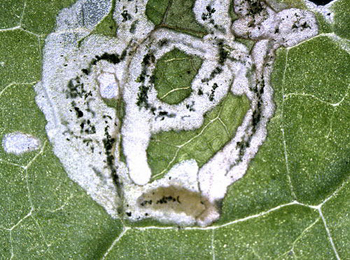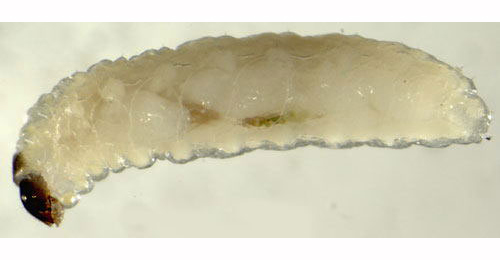|
||||||
|
DESCURAINIA. [Brassicaceae] |
|
Two species of Descurainia are recorded in Britain. The BSBI provide a downloadable plant crib for Brassicaceae. Two British miners are recorded on Descurainia. A key to the European miners recorded on Descurainia is provided in Bladmineerders van Europa. |
Key for the identification of the known mines of British |
1a > Leaf-miner: Mine linear, whitish, both upper and lower surface. Pupation internal, at the end of the mine with the anterior spiracles projecting through the epidermis (Spencer, 1976: 433). Upper-surface, less often lower-surface corridor. Frass in isolated grains. Pupation within the mine, in a, usually lower-surface, pupal chamber. A long whitish upper surface corridor, which eventually goes lower surface. |
|
Chromatomyia horticola (Goureau, 1851) [Diptera: Agromyzidae]. |
1b > Leaf-miner: Rather small, untidy, full depth, often branched corridor, often close to the leaf margin. Sides irregularly eaten out. Frass in a greyish-green central line that is interrupted from time to time, sometimes partly in strings. In times of rain the frass may run out and appear greenish. Usually several mines in a leaf. The body is whitish; head greyish brown with Y-shaped lighter marking. Pronotum with a pair of brownish shields. The mandibles have two teeth. |
 Mine of Ceutorhynchus minutus on Raphanus sativus Image: © Willem Ellis (Bladmineerders van Europa) |
 Ceutorhynchus minutus larva, lateral Image: © Willem Ellis (Bladmineerders van Europa) |
|
Ceutorhynchus minutus (Marsham, 1802) [Coleoptera: Curculionidae]. |
| Last updated 03-Jul-2019 Brian Pitkin | ||
